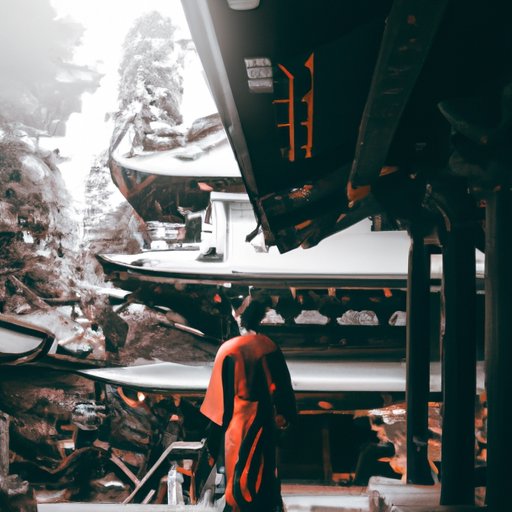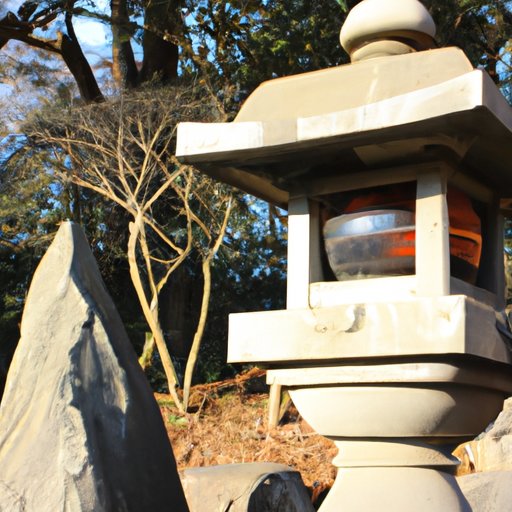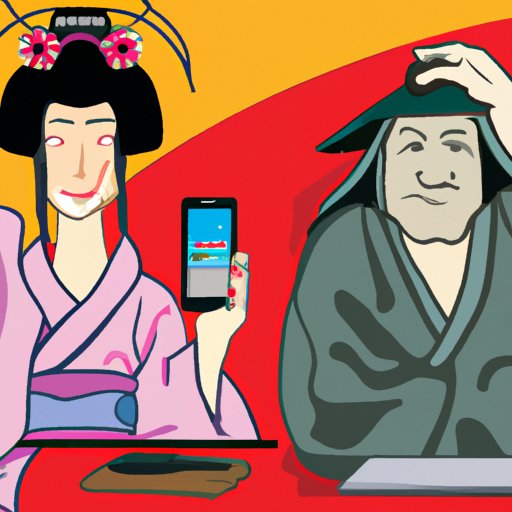Introduction
Japanese culture is an intricate and diverse set of customs, beliefs, and values that have been developed and passed down through generations. It includes the country’s unique religion, language, art, literature, architecture, music, and food. This article explores the richness of Japanese culture, from its ancient traditions to its modern influences.

Exploring the Ancient Traditions of Japanese Culture
The history and development of Japanese culture can be traced back thousands of years. In the 8th century, Japan adopted Chinese philosophies, such as Confucianism, which greatly influenced the structure of society and government. Later, in the 12th century, the native religion of Shintoism was established and blended with other religious practices. These two major influences shaped the cultural landscape of Japan for centuries.
Traditional art forms, such as calligraphy, origami, and kabuki theater, are still practiced today. Calligraphy is the art of beautiful handwriting and is often used in writing poems or creating artwork. Origami is the practice of folding paper into shapes and figures. Kabuki is a form of traditional Japanese theater that features elaborate costumes, makeup, and dance. All of these art forms are still popular today and are seen as reflections of Japanese culture.

The Artistic and Aesthetic Elements of Japanese Culture
Ukiyo-e woodblock prints were popular during the Edo period (1603-1868). These prints featured scenes of nature, everyday life, and famous people. They are still highly regarded today and are considered works of art. Manga and anime, two popular forms of graphic novels and animation, are also deeply rooted in Japanese culture. Ikebana flower arranging is another important aesthetic tradition that is still practiced today. It is based on the idea of creating natural beauty from flowers.
The Social and Political Structures of Japanese Culture
Honor and respect are highly valued in Japanese culture. This is reflected in the social structure, which places great importance on the role of the Emperor. Gender roles and expectations are also part of the culture, with men traditionally holding the highest positions in society. However, in recent years there has been more acceptance of women in leadership roles.
Food, Religion and Language in Japanese Culture
The diet and cuisine of Japan is heavily influenced by its geography. Fish and seafood are staples, as well as vegetables and rice. Traditional religions include Shintoism and Buddhism. The language is complex and has many dialects. Traditional writing systems, such as kanji and hiragana, are still used today.

The Influence of Modern Technology on Japanese Culture
In recent years, Western culture has had a strong influence on Japanese culture. Technological advances, such as the internet, have changed the way people communicate and interact. Social media and communication apps are widely used in Japan. This has led to an increase in global awareness and understanding of different cultures.
Conclusion
Japanese culture is a complex and fascinating mix of ancient traditions and modern influences. It is a unique blend of art, religion, language, and technology. Understanding Japanese culture is essential for anyone wishing to appreciate its rich history and culture.
(Note: Is this article not meeting your expectations? Do you have knowledge or insights to share? Unlock new opportunities and expand your reach by joining our authors team. Click Registration to join us and share your expertise with our readers.)
